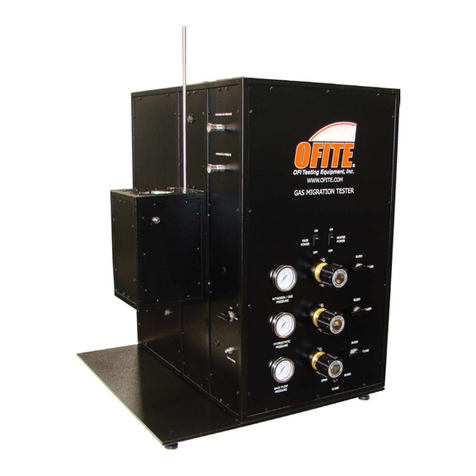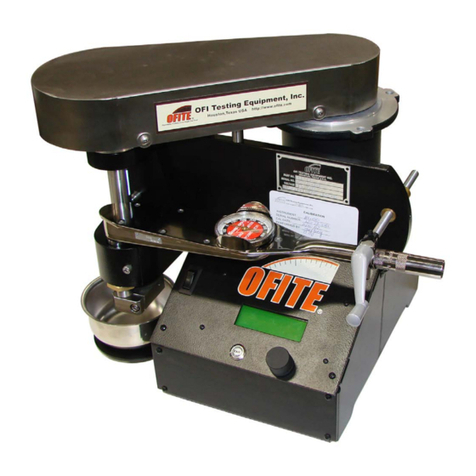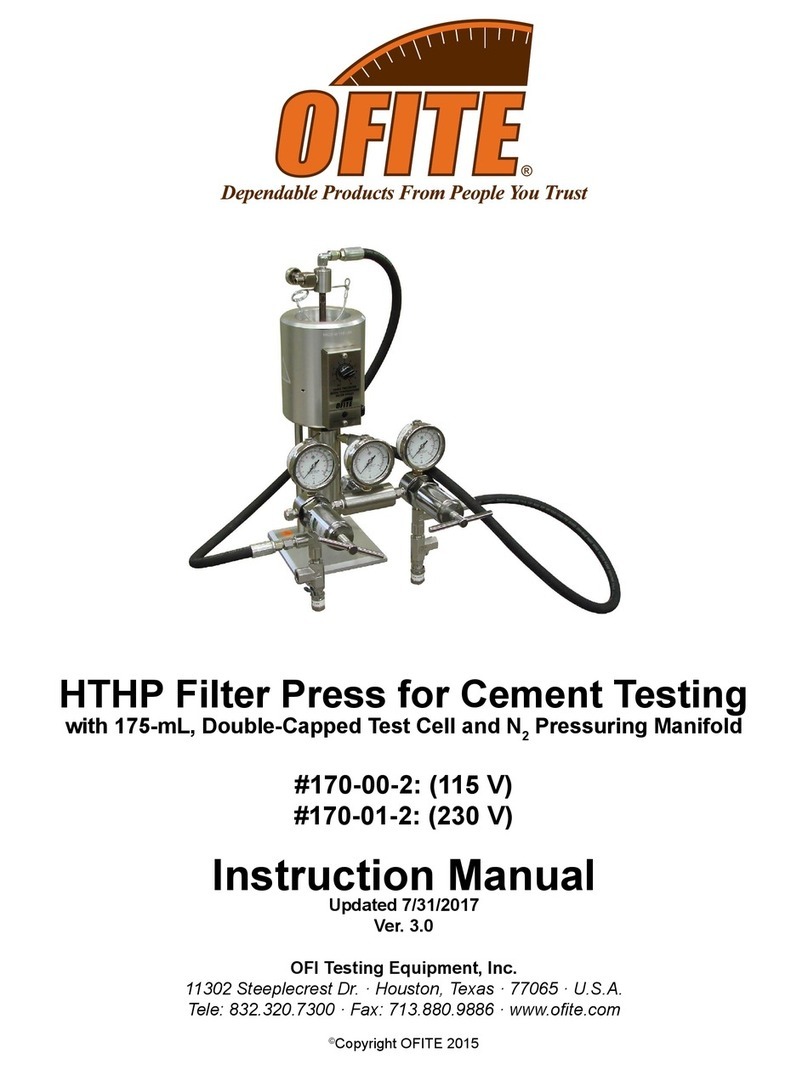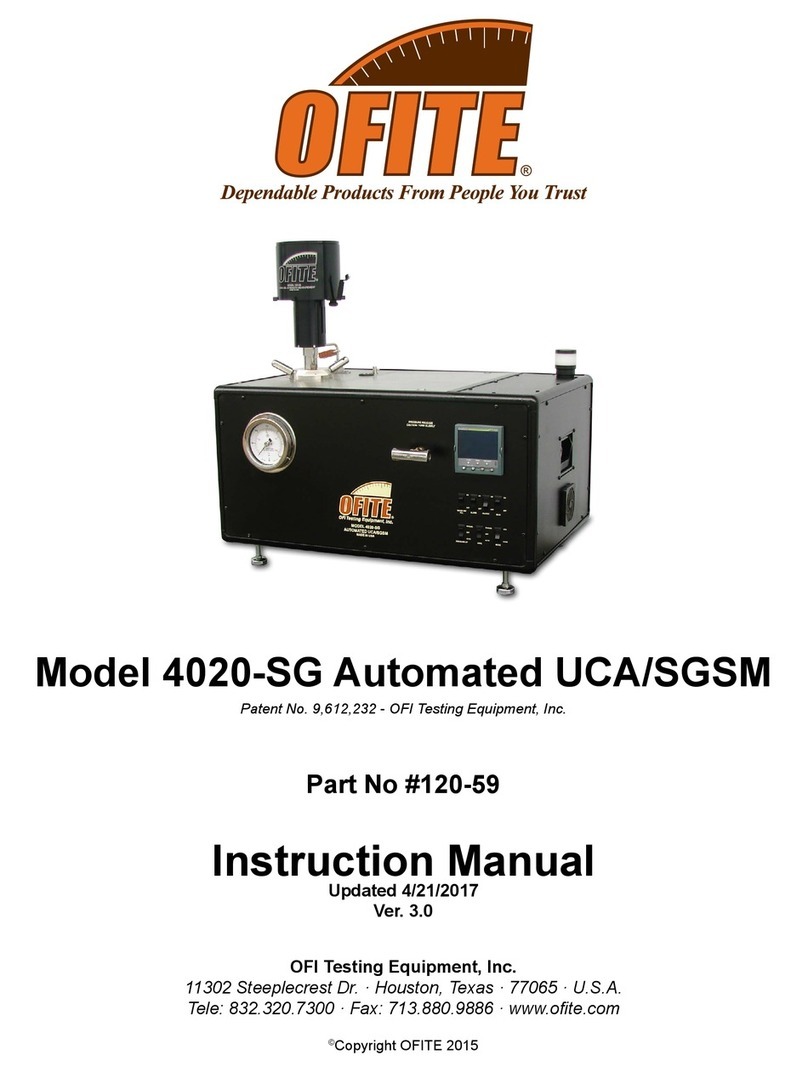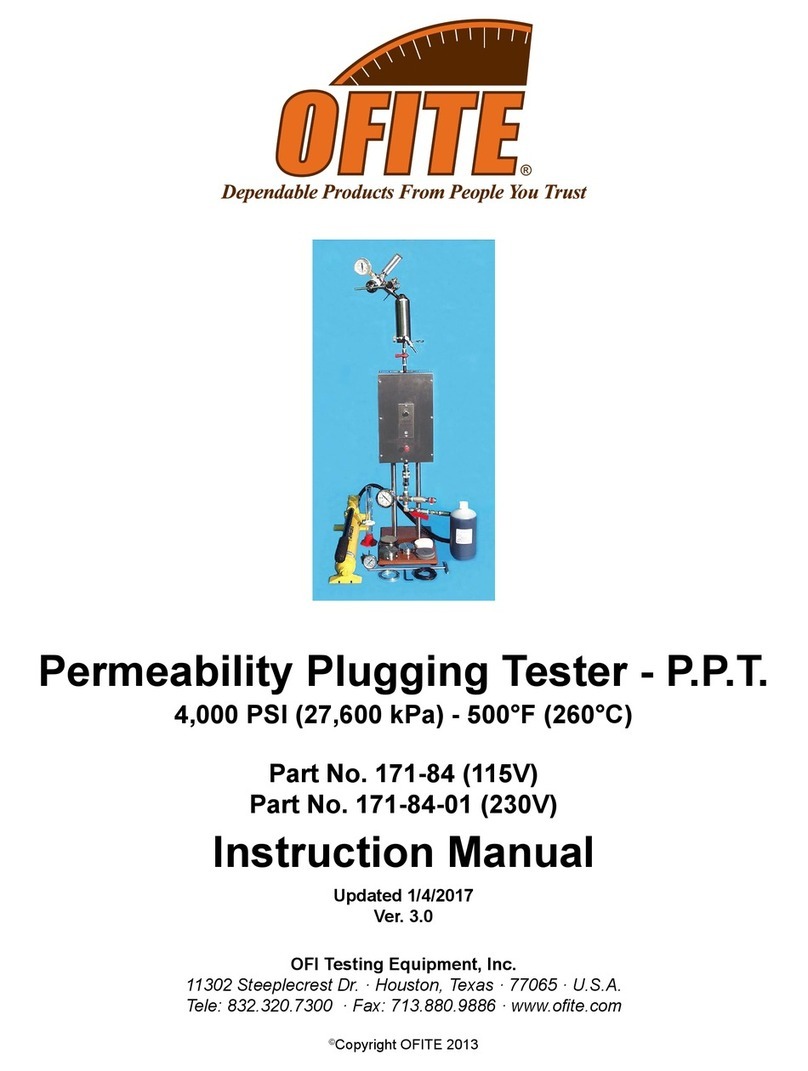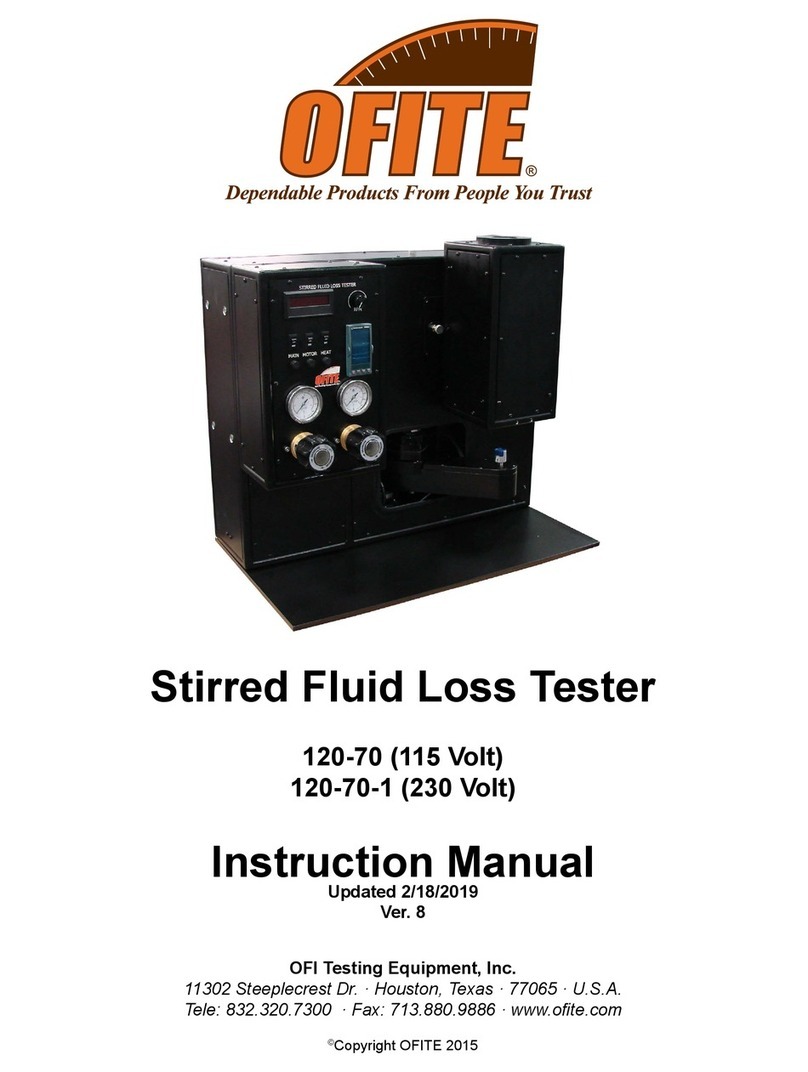
OFITE, 11302 Steeplecrest Dr., Houston, TX 77065 USA / Tel: 832-320-7300 / Fax: 713-880-9886 / www.ote.com 2
The OFITE Dierential Sticking Tester measures the “Stuck Pipe Tendency
Coecient” of drilling uids, and also determines how eective lubricants or
treatments might be with any given drilling uid. This coecient takes into ac-
count both the friction, or “stickiness”, of the lter cake, as well as the amount
of cake building that must occur in order to freeze or stick the pipe in the hole.
The coecient is determined by running a Timed Filtration test. By measuring
the area of cake building during a test, the “Bulk Sticking Coecient” is ob-
tained and read directly at the conclusion of the test. How likely a given uid
will be to produce a stuck pipe situation and how eective a given treatment
may be, can be immediately determined on-site.
The unit is normally pressurized by a CO2 pressuring assembly, but any
nitrogen source will also work. If nitrogen is used, the tester apparatus must
be tted with a suitable nitrogen regulator, gauges, valves, and high-pressure
hoses. The standard test uses 477.5 PSI (3,291 kPa) applied to a 200-mL
stainless steel vessel. The unit includes both a at-faced plate and a plate of
12½" (31.75 cm) spherical radius, which simulates the pipe inside the casing
or collars in the borehole. For samples that adhere more to the plate than to
the lter paper, stainless steel micro-corrugation disks are provided. For con-
venience a stainless steel carrying case is available as an optional item.
Intro
Description













